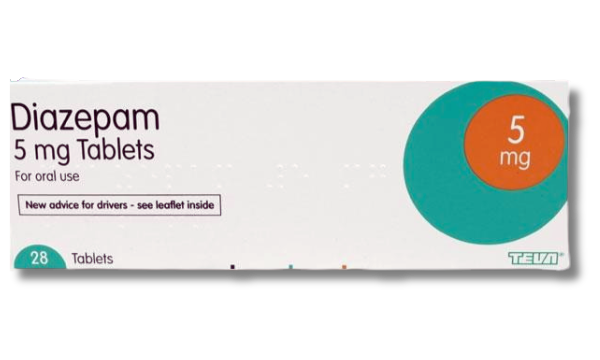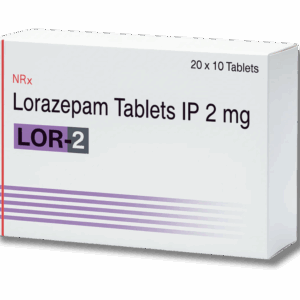Diazepam is a prescription medication from the benzodiazepine group, often recognized by its brand name, Valium. Doctors prescribe it for anxiety, muscle spasms, certain seizures, and symptoms tied to alcohol withdrawal.
You might get diazepam as tablets, a liquid, rectal tubes, or as an injection. The form depends on what you need and your doctor’s judgment.
This medicine calms brain activity, which can lower anxiety and relax tense muscles. Anyone using diazepam should stick closely to their doctor’s instructions, since it’s best for short-term use due to side effects and dependency risks.
Pharmacological Profile of Diazepam
Diazepam is a benzodiazepine known for its calming, muscle-relaxant, and anticonvulsant powers. Doctors reach for it to treat issues like anxiety, muscle spasms, and certain seizure disorders.
Mechanism of Action
Diazepam targets the central nervous system, working on the gamma-aminobutyric acid (GABA) neurotransmitter system.
It binds to a specific spot on the GABA-A receptor’s chloride channel. This action boosts GABA’s effects, letting more chloride ions into neurons and dialing down their excitability.
That’s what brings about the calming and muscle-relaxing results. Since this works through key brain pathways, misusing diazepam can cause drowsiness and poor judgment.
Dosage Forms and Administration
Diazepam comes in several forms, making it flexible for different situations.
Available dosage forms include:
- Tablets: Usually taken by mouth for anxiety, muscle spasms, or ongoing management.
- Oral solution: Handy for people who can’t swallow tablets.
- Injection (IV or IM): Used in hospitals, especially for emergencies like seizures or as pre-medication before surgery.
- Rectal gel: Often given for sudden seizure control, especially in kids.
Doses depend on your condition, age, and health. Pharmacies only provide it with a prescription. Following instructions helps avoid side effects, overdose, or getting dependent.
Indications and Therapeutic Uses
Doctors use diazepam for a range of problems:
- Anxiety and Anxiety Disorders: Calms symptoms like worry, tension, and panic.
- Seizures and Epilepsy: Helps control fits or ongoing convulsions.
- Muscle Spasms and Spasticity: Loosens muscle stiffness and spasms caused by cerebral palsy, injury, or other conditions.
- Alcohol Withdrawal Symptoms: Lowers agitation, tremors, and risk of severe complications during withdrawal.
- Pre-medication before surgery (pre-med): Relaxes patients and eases anxiety or muscle tension before procedures.
Sometimes, doctors prescribe it for phobias or panic attacks. Diazepam isn’t usually a first choice for long-term treatment because of dependence risks.
Contraindications and Special Precautions
Diazepam isn’t safe for everyone. People with myasthenia gravis, sleep apnoea, severe liver disease, or severe respiratory insufficiency shouldn’t take it.
Anyone allergic to benzodiazepines also needs to steer clear. Patients with closed-angle glaucoma need extra care before starting it.
Older adults face higher risks of confusion, drowsiness, and falls. During pregnancy and breastfeeding, doctors try to avoid diazepam because it could harm the baby.
It’s prescribed cautiously for those with alcohol or drug dependence, and long-term use is discouraged. Regular check-ins with your doctor help catch problems early and keep side effects in check.
Adverse Reactions and Safety Considerations
Diazepam can cause allergic reactions and interacts with some other meds. It also brings risks like dependence, overdose, and withdrawal, especially if you use it for a long time.
Common Side Effects of Diazepam
The usual side effects are fatigue, drowsiness, and muscle weakness. These often show up soon after taking it and can make driving or using machinery unsafe.
Other mild effects include dizziness, poor coordination, and confusion. Some notice memory slips or trouble focusing. Insomnia, agitation, or mild depression might pop up for a few users.
Most mild side effects fade, but they can stick around—especially in older people or those with other health issues. If symptoms drag on or get worse, get medical advice.
Serious Risks and Warnings
Major risks include dependence, addiction, and withdrawal symptoms, especially after more than four weeks of use. Withdrawal can bring anxiety, fever, sweating, tremors, or even seizures if you stop suddenly.
Overdose is a real danger. Signs are severe drowsiness, confusion, slow or tough breathing (respiratory depression), and loss of consciousness.
Rare but serious reactions like hallucinations, psychosis, or suicidal thoughts sometimes happen, especially in those with mental health histories. In rare cases, allergic reactions like facial swelling or trouble breathing have shown up.
Drug Interactions
Diazepam interacts with many meds that affect the brain. CNS depressants like antihistamines, anticonvulsants, antidepressants, and anaesthetics can make you extra sleepy or slow your breathing.
Mixing diazepam with alcohol is risky and should be avoided. Taking it with other benzodiazepines or drugs containing benzyl alcohol ups the chance of side effects or overdose.
Your healthcare provider needs to know about all your medications to avoid bad interactions. Don’t start or stop meds without talking to your doctor.
Clinical Management and Patient Guidance
Managing diazepam means controlling the dose, checking in regularly, and giving clear instructions. Certain groups—like older adults, pregnant women, or people with mental health issues—might need a tailored approach.
Dosage and Titration
Diazepam doses are personal: they depend on your condition, age, and how you respond. Adults usually start with 2–5 mg two to three times a day, increasing slowly to find the lowest effective dose.
Doctors rarely prescribe more than 30 mg a day. Titration helps avoid too much drowsiness or oversedation. Adjustments go slow, especially for older adults who are more sensitive.
For kids or people with liver trouble, doctors start even lower. If you take opioids, be extra careful—these can interact and boost sedation, so close monitoring is a must.
Monitoring and Discontinuation
People on diazepam need regular checks for side effects like sleepiness, confusion, or breathing problems. If you take it longer than recommended, signs of dependence or misuse can show up. Tolerance can also develop, making the drug less effective over time.
Don’t stop suddenly—this can trigger withdrawal, including anxiety, agitation, or even seizures. Doctors recommend tapering the dose slowly. Health professionals support patients to prevent withdrawal and help with mental health needs during the process.
Patient Considerations and Special Populations
Older adults face higher risks of falls, confusion, and lingering sedation. Lower starting doses and close monitoring help reduce these risks.
During pregnancy, doctors only consider diazepam if absolutely needed, as it can harm the baby, especially later in pregnancy. Breastfeeding mothers should avoid it, since it passes into breast milk and might affect the child.
Anyone with a history of substance misuse, mental health problems, or who’s already on other CNS depressants needs extra caution. Patient education should cover avoiding alcohol, driving, and using machines. Written instructions help patients remember when and how to take diazepam, what to do if they miss a dose, and when to seek help for side effects.
Frequently Asked Questions
Diazepam treats specific medical problems like anxiety, muscle spasms, and seizures. It has its own set of effects, risks, and usage rules that patients and carers should know.
What is Diazepam prescribed for?
Doctors usually prescribe diazepam for anxiety, muscle spasms, and certain seizures. Sometimes they use it before medical procedures to help patients relax. It can also help manage alcohol withdrawal symptoms.
What are the common side effects associated with Diazepam?
Common side effects are drowsiness, tiredness, and muscle weakness. Some people feel confused or have trouble with coordination. Less common issues might include dry mouth, blurred vision, or appetite changes.
How does Diazepam exert its action in the body?
Diazepam boosts the effects of a chemical messenger in the brain called gamma-aminobutyric acid (GABA). This calms the brain and nerves, which helps reduce anxiety, relax muscles, and control seizures.
What is the recommended dosage for Diazepam?
The dose depends on what you’re treating, your age, and how you respond. For anxiety in adults, doctors usually start low and may increase if needed. Always follow your doctor’s instructions and don’t adjust the dose on your own.
Under what circumstances is Diazepam contraindicated?
People with severe liver disease, certain types of glaucoma, or serious breathing problems shouldn’t use diazepam. It’s also not for anyone allergic to benzodiazepines. Caution is needed for older adults and those with a history of substance misuse.
Can Diazepam be used to improve sleep quality?
Diazepam can help with sleep problems for a short time, especially when anxiety or certain medical conditions are involved.
Still, most doctors hesitate to suggest it for ongoing sleep issues. It can lead to dependence and some tricky withdrawal effects down the line.


